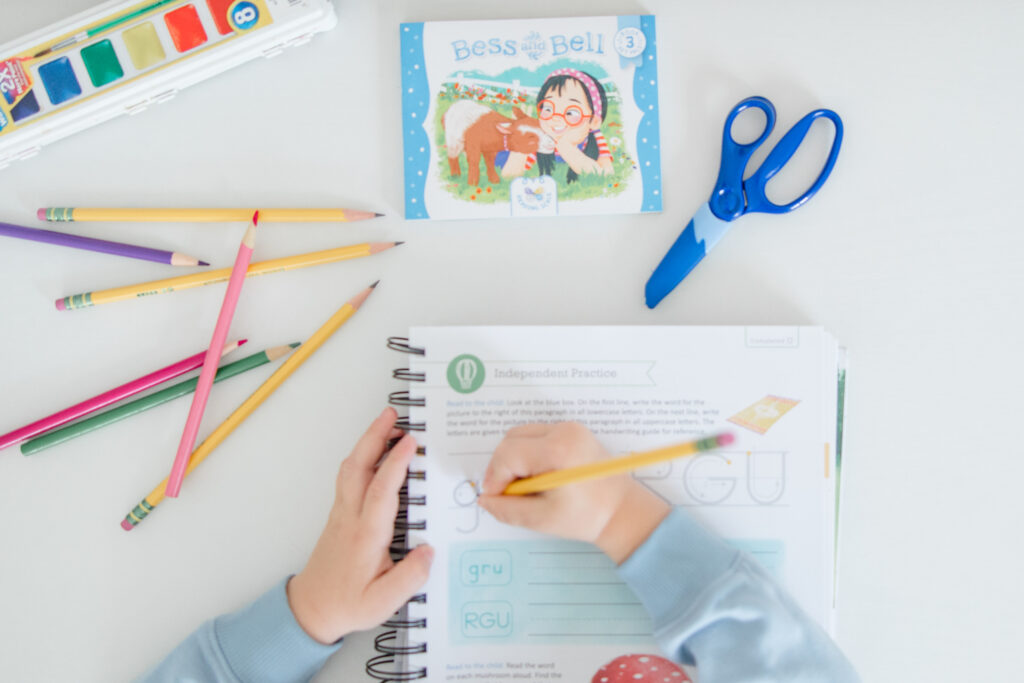How to Start Homeschooling (When You Have No Idea Where to Begin)
If you’re thinking about homeschooling but have no idea where to start, you’re not alone. Almost every mom I talk to says the same thing: “I want to homeschool… but I don’t even know what the first step is.”
The good news? Starting doesn’t have to be complicated. You don’t need a stack of curriculum or a schoolroom makeover (unless you want to because if you’re like me you love a chance for a little home diy). You just need a simple plan and the confidence to take that first step.
Here’s how to start homeschooling:
Step 1: Know Your State Requirements
Homeschooling looks a little different in every state. Some require you to send in a letter of intent, others ask for an annual portfolio or testing results, and some barely require anything at all.
👉 The easiest way to check is to search “[Your State] Department of Education + homeschool requirements.” Write down the few things you need to do and add any deadlines to your calendar. Once you’ve got the basics handled, you’re free to focus on your actual homeschool. Some states (like West Virginia where we are based) even have scholarships available for new homeschoolers so definitely do your research!
Step 2: Decide on a Start Date
Here’s a secret: you don’t have to start in August. You don’t even need to match the public school calendar.
Pick a date that works for your family — maybe next Monday, maybe after a big trip, maybe right after the holidays. The important thing is to just start. Don’t wait for perfect. Just let your kids know ahead of time and prep for it! (If you are unsure of how to prep for a peaceful first day grab my free checklist HERE!)
Step 3: Keep It Simple at First
Homeschooling doesn’t mean recreating eight hours at a desk. Especially if your kids are in the early years, start small:
- Reading together (a story at breakfast counts)
- A little math practice (10–15 minutes is plenty at first)
- One anchor activity like outside play, morning basket time, or an art box. That’s it. You’ll add more over time, but starting light helps everyone adjust without overwhelm.
If the idea of starting having to figure out what that reading practice and math practice looks like, then it is okay to start with a simple curriculum you like but don’t feel like you have to have a huge set for every subject.
Step 4: Create a Space That Works for You
You don’t need to turn your dining room into a classroom. A basket of books by the couch, a bin of art supplies, or the kitchen table is enough. The goal is to create a spot where learning feels natural, not forced. We have a homeschool room now, but for years we used a little rolling cart to keep everything easily accessible.
Step 5: Give Yourself Permission to Learn How to Start Homeschooling As You Go
The first few weeks may feel messy, and that’s okay. You’re adjusting just as much as your kids are. Homeschooling is about connection, curiosity, and building a rhythm that works for your family — not checking off endless boxes. Just try to stick to a routine for a few weeks at a time and then adjust as you go because kids THRIVE on knowing what the plan is each day.
Ready for Your Next Step?
If you’re still feeling unsure, I created something just for you: The Simple Homeschool Starter Checklist.
It’s a quick guide with 10 things to do for a peaceful first day of homeschool — simple, doable steps that will save you hours of second-guessing and help you feel prepared from day one.
👉 [Grab your free copy HERE]
Cheering you on,
Katelyn


View comments
+ Leave a comment